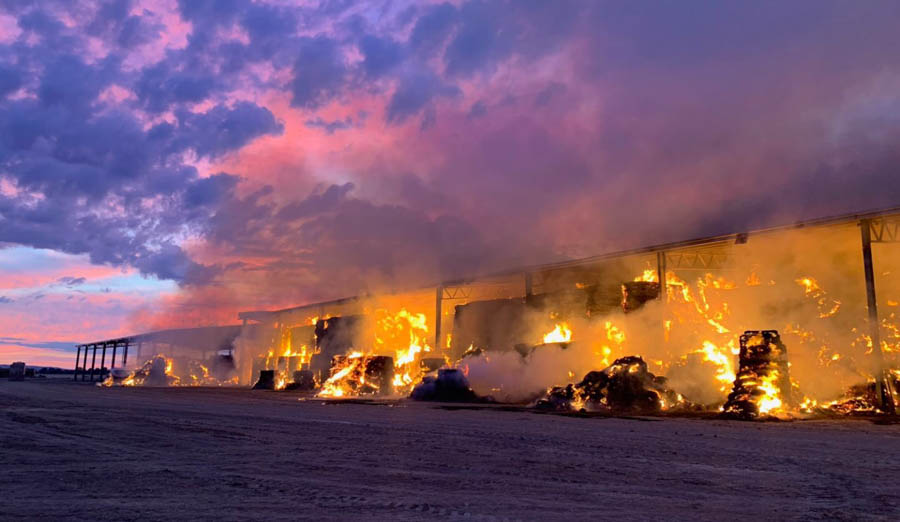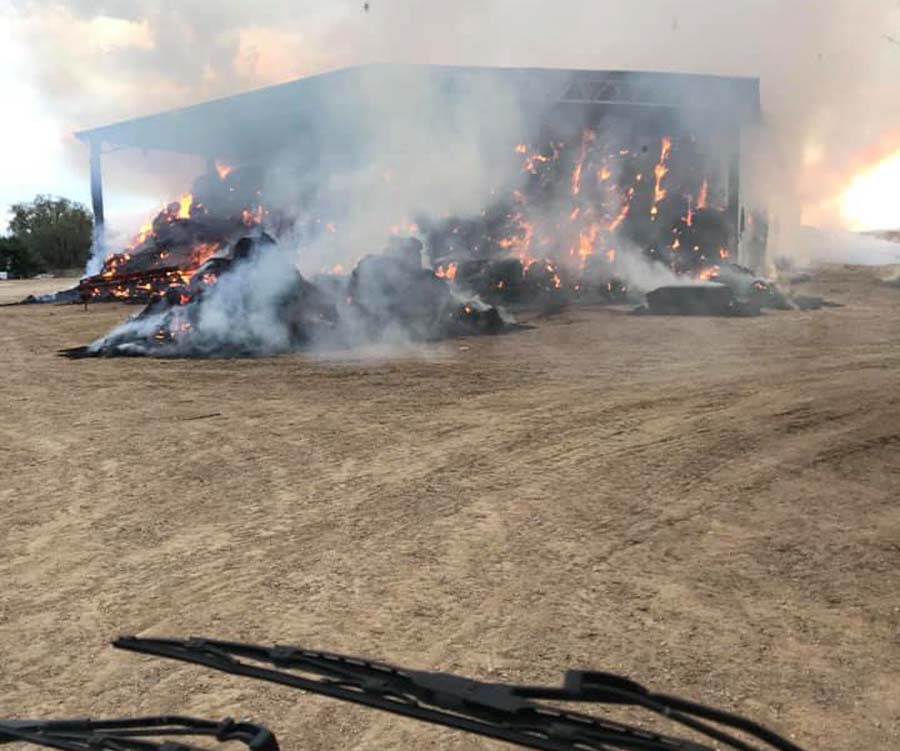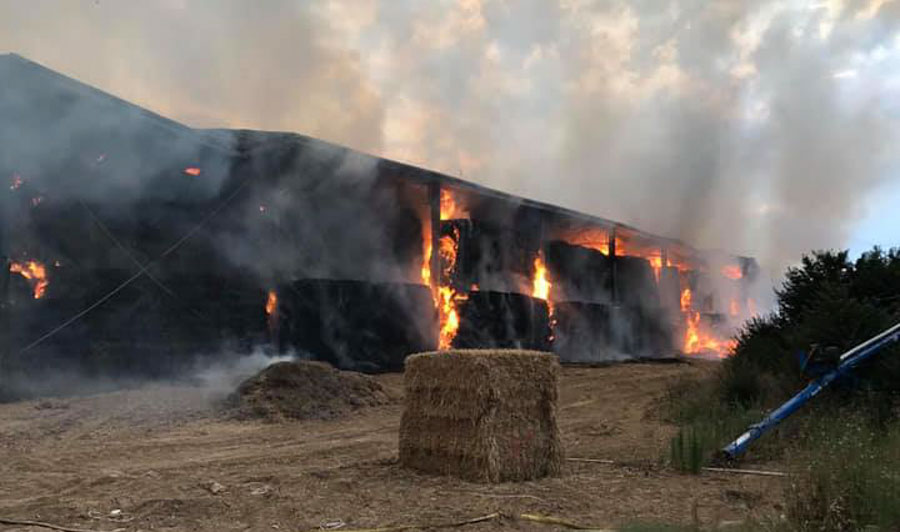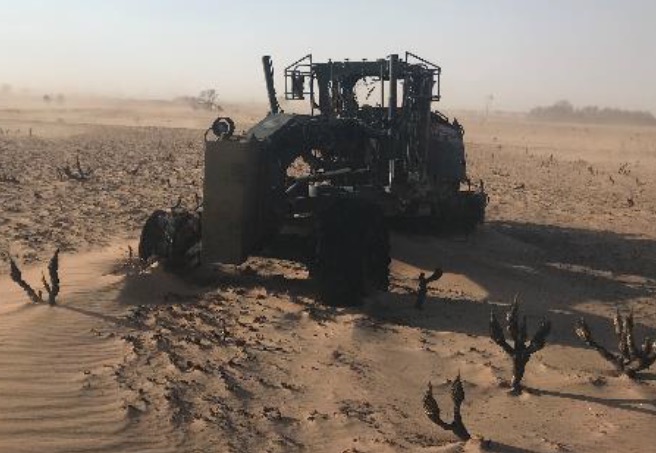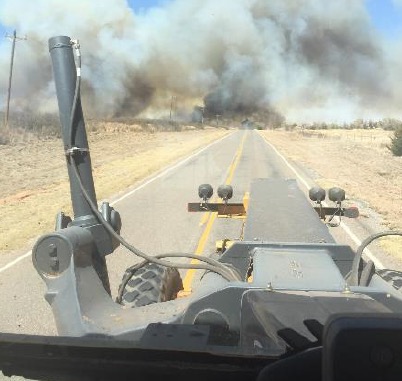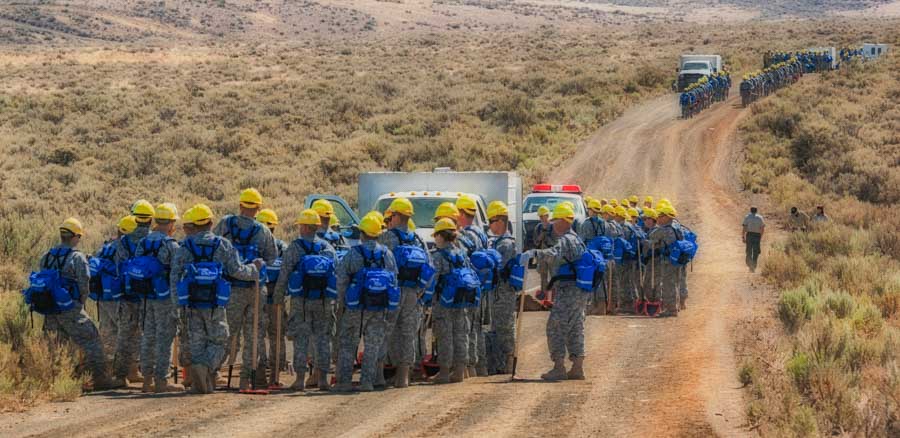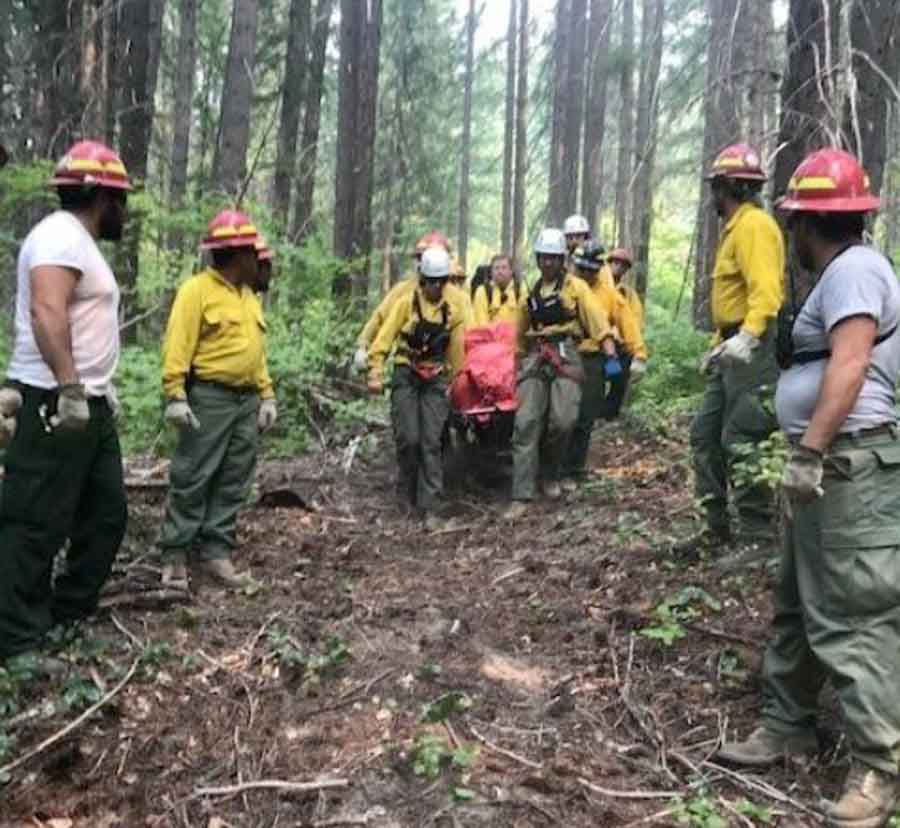
A report has been released for what turned out to be a difficult and complex rescue after a water tender rolled 150-feet down a slope. It occurred August 18, 2018 on the Cougar Creek Fire outside of Leavenworth, Washington. The steepness and heavy vegetation slowed efforts to extract and transport the 300-pound truck driver but in spite of the challenges the person identified as “Robert” in the report arrived at a Life Flight helicopter about 2 hours and 20 minutes after the first 911 call.
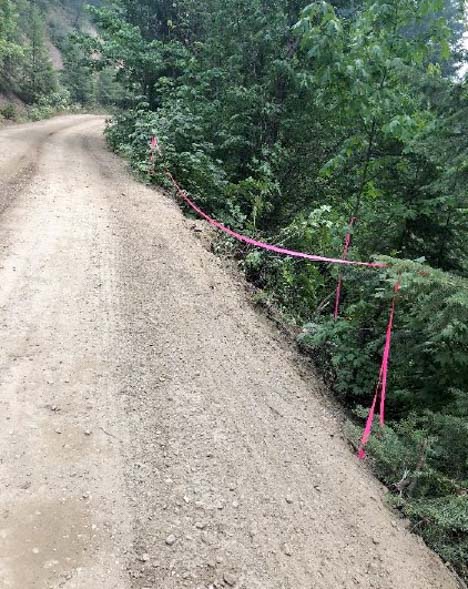
A system of ropes was necessary in order for personnel to access the victim from the top side, but the report heaps a great deal of praise on a Type 2 hand crew that from a lower road…
“…cut a highway through the forest in a matter of minutes.” In fact, the [Division Supervisor] later recalled that the crew was so fast and so efficient that they cleared the path in front of the Medics who were arriving from the bottom. These Medics coming up from the bottom were able to maintain a “comfortable walking pace” behind the crew as they worked.
The timber canopy virtually eliminated the possibility of extraction by a helicopter with hoist or short haul capabilities. Plus, there was a three-hour ETA for the helicopter.
The 30 people on scene carried the victim in a Stokes basket down the steep slope to a waiting ambulance below, using a standard carry and caterpillar (or conveyor belt) system depending on the incline.
A section in the report section titled “Drills Work!” included this:
Last year, a Montana Incident Management Team put the Type 2 Crew (who cut the access line up to the accident site on this incident) through a drill that taught them how to use the caterpillar system and polished their cutting skills. This crew’s members said specifically that the reason they were so successful on this incident was because of this earlier drill that they had experienced in Montana.
NIFC produced a video about the management of a serious injury complicated by a helicopter incident that occurred on the Deer Park Fire on the Sawtooth National Forest in central Idaho in 2013. In the video, which can be seen in the Wildfire Today article about the incident, you can see a description of the conveyor belt technique for moving a stokes basket in rocky or steep terrain. It begins at 5:25 in the video.
The entire 11-page report about the August 18, 2018 accident on the Cougar Creek Fire can be downloaded HERE (1.4 MB).


